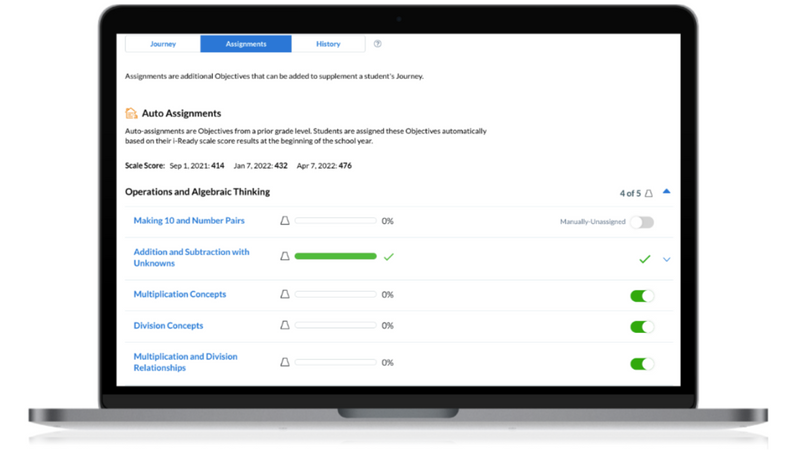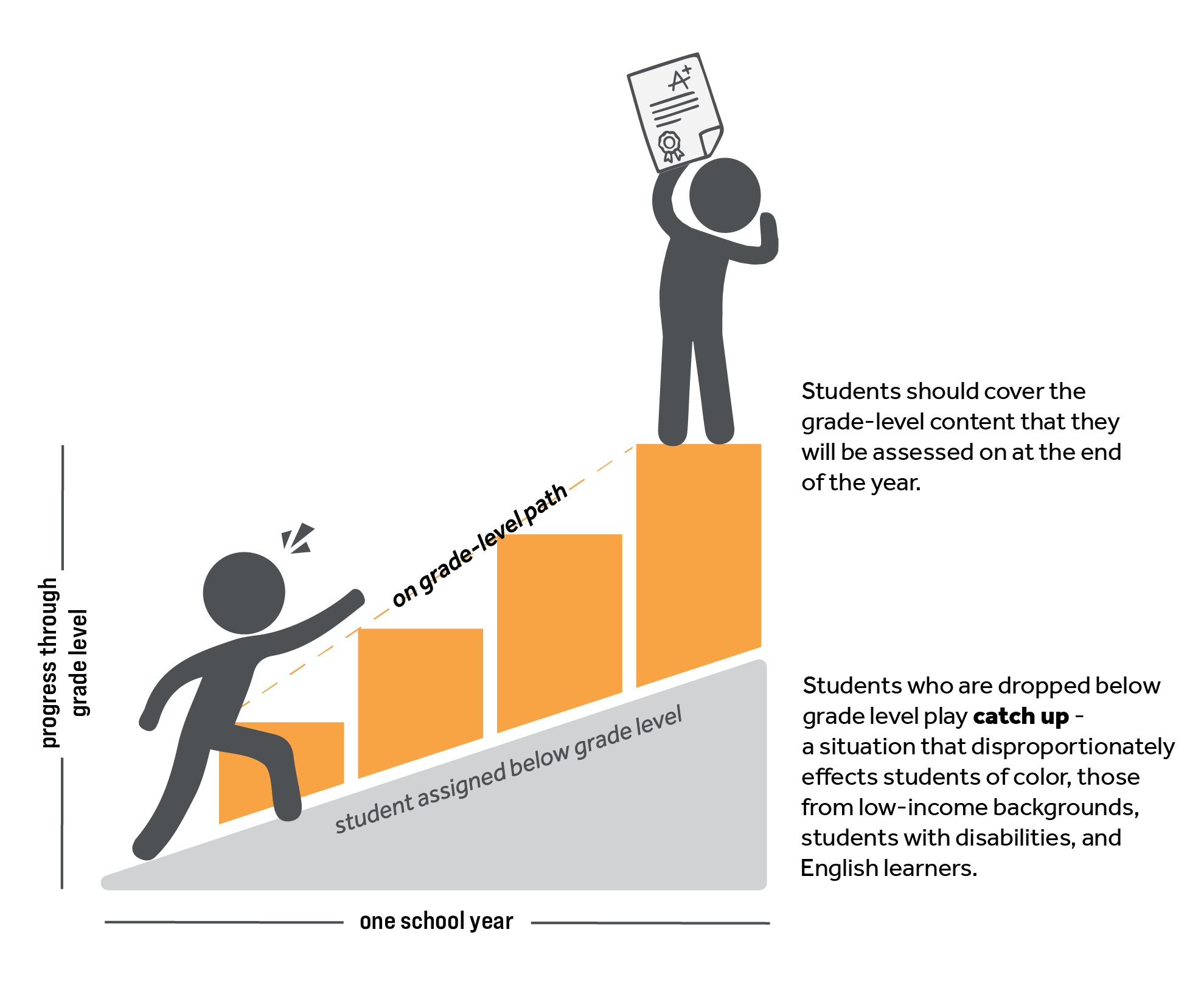Programs
Experience
Services
Educator Topics
Subscribe to the Newsletter
Subscribe to the Blog
Teachers of students using ST Math in grades 2-8 have the option to have intervention content auto-assigned to students based on their assessment scores from NWEA® MAP® Growth, Renaissance Star Math, or other assessment providers.
|
Leverage Assessment Data |
|
Support Students |
|
Empower Teachers |
Give students the foundational content they need to develop deep conceptual understanding that lasts. ST Math: Assessment Support Tool is an add-on tool to the award-winning ST Math visual instructional program.


ST Math: Assessment Support Tool will build students’ math confidence by auto-assigning foundational ST Math objectives based upon their assessment score.
Students' scores are imported from the assessment provider
Assignments are automatically made for students
Educators have the ability to customize the assignments
For grades 2-5, assessment scores are used to assign different sets of foundational objectives from previous grade levels chosen to accelerate students to grade level work. Students are assigned sets of content based on whether they are assessed one grade or multiple grades below their current grade level. For grades 6-8, assessment scores can be used to assign individual foundational objectives based on domain scores. ST Math: Assessment Support Tool is available for rostered districts only.

It is widely believed that students who spend time on below-grade-level content will catch up, but we have found that is not the case. They are capable of working through challenges with persistence and perseverance to develop a deep conceptual understanding of math.
Summer school students, and educators alike, are doing everything they can to get back on track for the coming fall. We've found that students in fact, don't play "catch up" at all. By rushing the pace at which objectives are meant to be covered, the material never sticks before moving on to the next one.

Stick to grade-level content and instructional rigor.
Focus on the depth of instruction, rather than the pace.
Prioritize content and learning.
Maintain the inclusion of each and every learner.
Identify and address gaps in learning through instruction, avoiding the misuse of standardized testing to place kids into high or low ability groups or provide low levels of instructional rigor to lower performing students.
Capitalize on commonalities, not differences.

